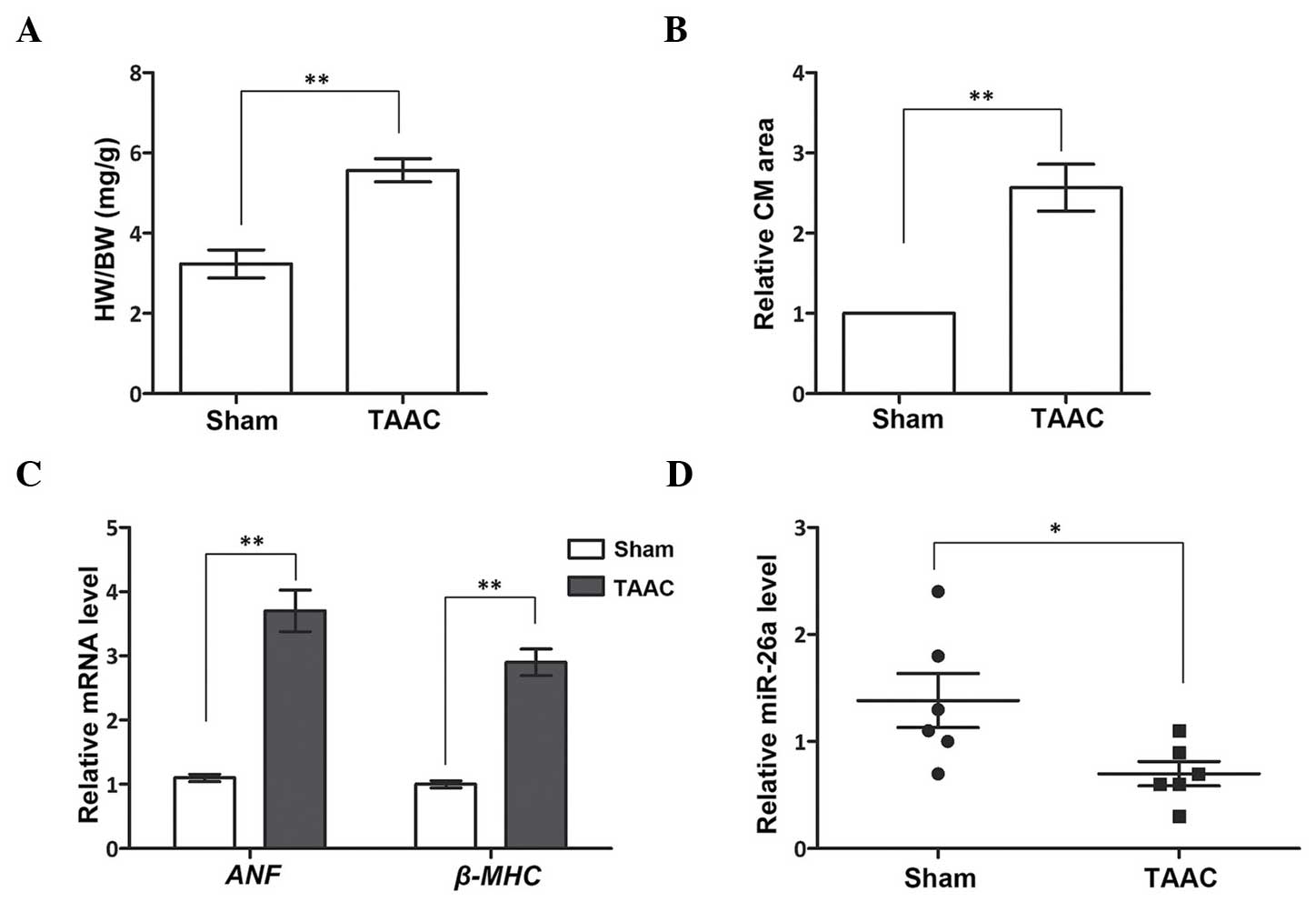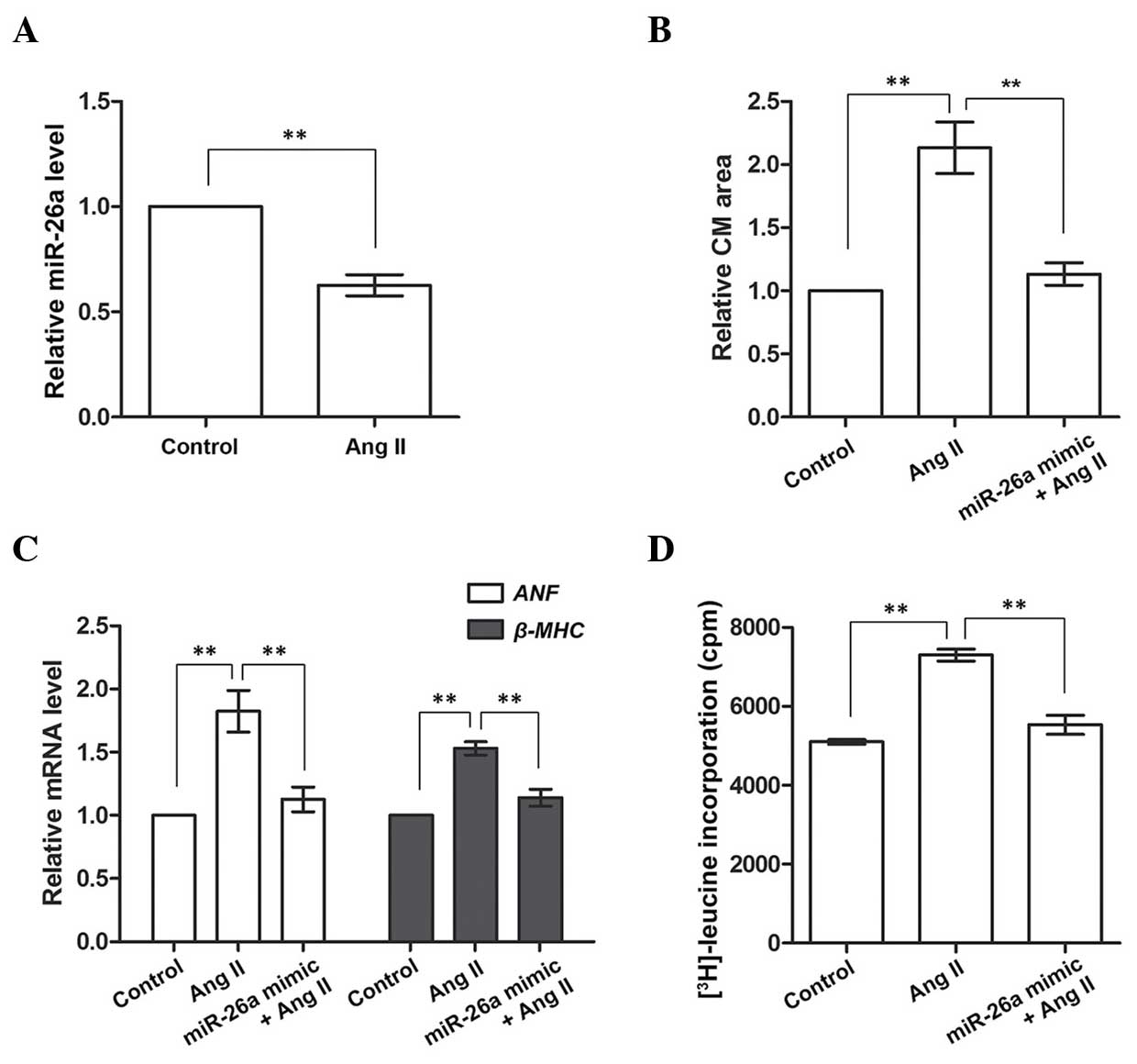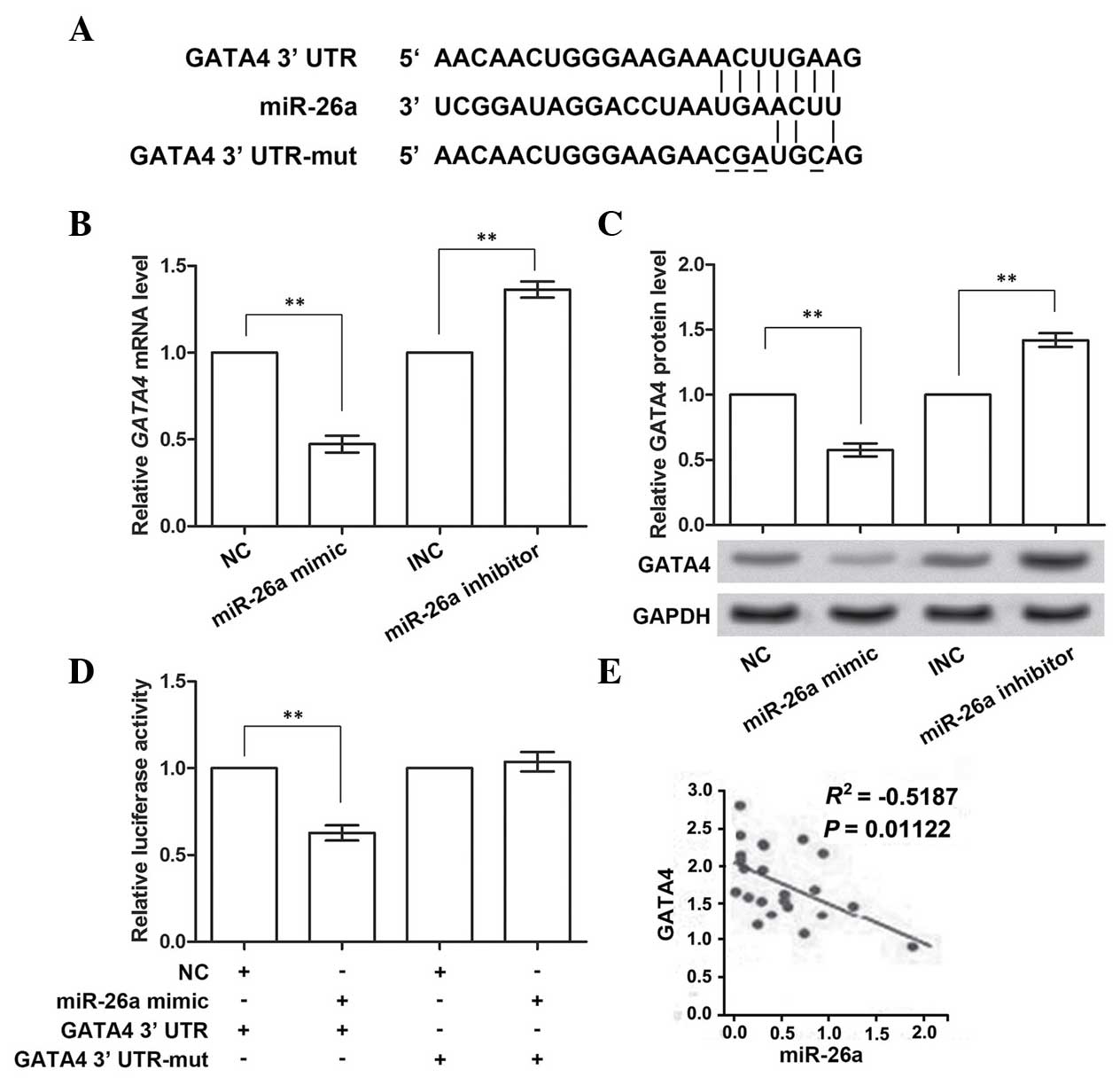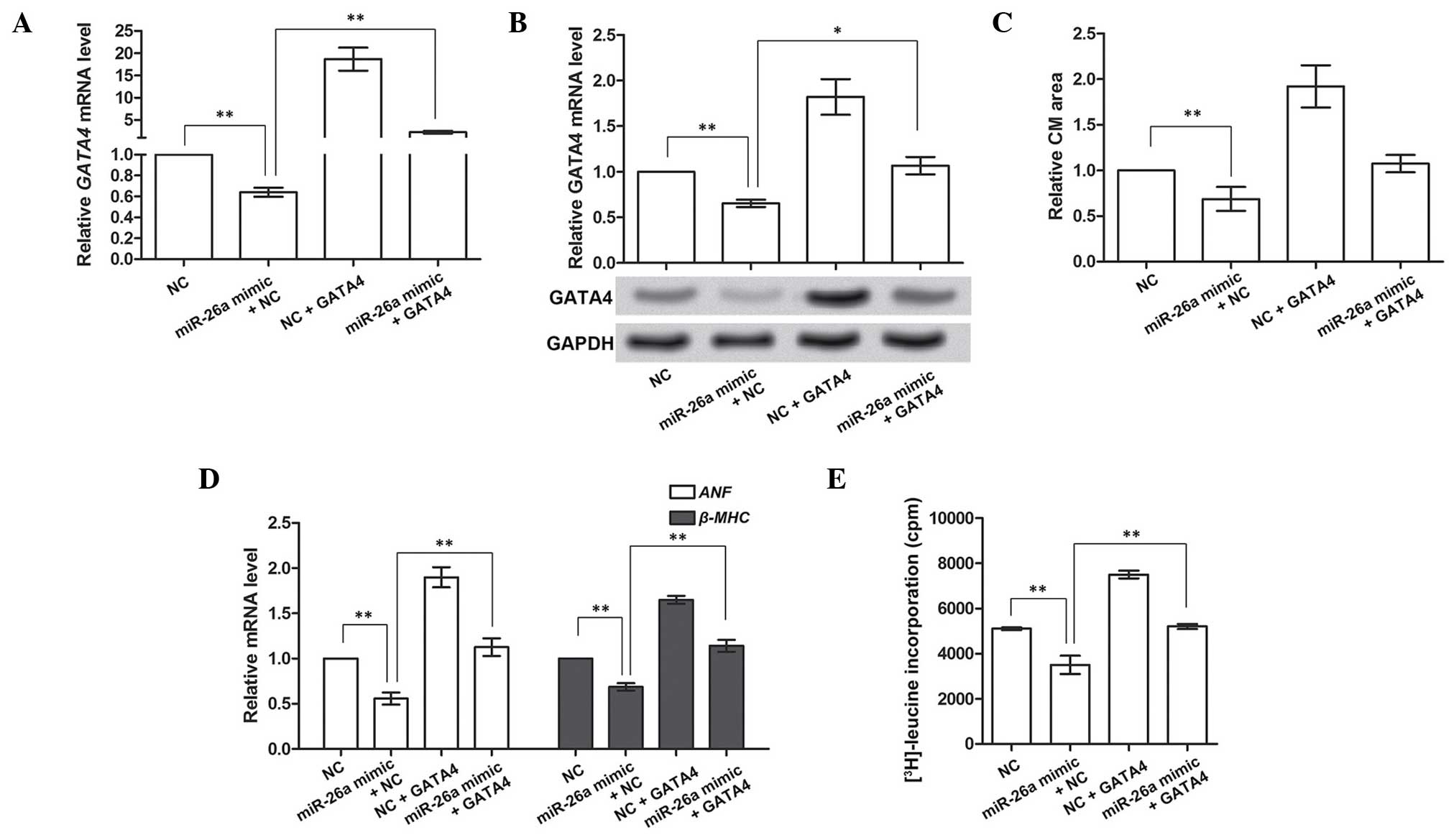|
1
|
Senthil V, Chen SN, Tsybouleva N, Halder
T, Nagueh SF, Willerson JT, Roberts R and Marian AJ: Prevention of
cardiac hypertrophy by atorvastatin in a transgenic rabbit model of
human hypertrophic cardiomyopathy. Circ Res. 97:285–292. 2005.
View Article : Google Scholar : PubMed/NCBI
|
|
2
|
Okere IC, Young ME, McElfresh TA, Chess
DJ, Sharov VG, Sabbah HN, Hoit BD, Ernsberger P, Chandler MP and
Stanley WC: Low carbohydrate/high-fat diet attenuates cardiac
hypertrophy, remodeling and altered gene expression in
hypertension. Hypertension. 48:1116–1123. 2006. View Article : Google Scholar : PubMed/NCBI
|
|
3
|
Doyle B, Sorajja P, Hynes B, Kumar AH,
Araoz PA, Stalboerger PG, Miller D, Reed C, Schmeckpeper J, Wang S,
et al: Progenitor cell therapy in a porcine acute myocardial
infarction model induces cardiac hypertrophy, mediated by paracrine
secretion of cardiotrophic factors including TGFbeta1. Stem Cells
Dev. 17:941–951. 2008. View Article : Google Scholar : PubMed/NCBI
|
|
4
|
Weeks KL and McMullen JR: The athlete's
heart vs the failing heart: Can signaling explain the two distinct
outcomes? Physiology (Bethesda). 26:97–105. 2011. View Article : Google Scholar
|
|
5
|
Kodama H, Fukuda K, Pan J, Sano M,
Takahashi T, Kato T, Makino S, Manabe T, Murata M and Ogawa S:
Significance of ERK cascade compared with JAK/STAT and PI3-K
pathway in gp130-mediated cardiac hypertrophy. Am J Physiol Heart
Circ Physiol. 279:H1635–H1644. 2000.PubMed/NCBI
|
|
6
|
Lezoualc'h F, Metrich M, Hmitou I,
Duquesnes N and Morel E: Small GTP-binding proteins and their
regulators in cardiac hypertrophy. J Mol Cell Cardiol. 44:623–632.
2008. View Article : Google Scholar : PubMed/NCBI
|
|
7
|
Pan J, Singh US, Takahashi T, Oka Y,
Palm-Leis A, Herbelin BS and Baker KM: PKC mediates cyclic
stretch-induced cardiac hypertrophy through Rho family GTPases and
mitogen-activated protein kinases in cardiomyocytes. J Cell
Physiol. 202:536–553. 2005. View Article : Google Scholar
|
|
8
|
Yue H, Li W, Desnoyer R and Karnik SS:
Role of nuclear unphosphorylated STAT3 in angiotensin II type 1
receptor-induced cardiac hypertrophy. Cardiovasc Res. 85:90–99.
2010. View Article : Google Scholar
|
|
9
|
Gladka MM, da Costa Martins PA and De
Windt LJ: Small changes can make a big difference - microRNA
regulation of cardiac hypertrophy. J Mol Cell Cardiol. 52:74–82.
2012. View Article : Google Scholar
|
|
10
|
Callis TE, Pandya K, Seok HY, Tang RH,
Tatsuguchi M, Huang ZP, Chen JF, Deng Z, Gunn B, Shumate J, et al:
MicroRNA-208a is a regulator of cardiac hypertrophy and conduction
in mice. J Clin Invest. 119:2772–2786. 2009. View Article : Google Scholar :
|
|
11
|
Wang K, Lin ZQ, Long B, Li JH, Zhou J and
Li PF: Cardiac hypertrophy is positively regulated by MicroRNA
miR-23a. J Biol Chem. 287:589–599. 2012. View Article : Google Scholar :
|
|
12
|
Huang ZP, Chen J, Seok HY, Zhang Z,
Kataoka M, Hu X and Wang DZ: MicroRNA-22 regulates cardiac
hypertrophy and remodeling in response to stress. Circ Res.
112:1234–1243. 2013. View Article : Google Scholar : PubMed/NCBI
|
|
13
|
Care A, Catalucci D, Felicetti F, Bonci D,
Addario A, Gallo P, Bang ML, Segnalini P, Gu Y, Dalton ND, et al:
MicroRNA-133 controls cardiac hypertrophy. Nat Med. 13:613–618.
2007. View
Article : Google Scholar
|
|
14
|
Li Q, Song XW, Zou J, Wang GK, Kremneva E,
Li XQ, Zhu N, Sun T, Lappalainen P, Yuan WJ, et al: Attenuation of
microRNA-1 derepresses the cytoskeleton regulatory protein
twinfilin-1 to provoke cardiac hypertrophy. J Cell Sci.
123:2444–2452. 2010. View Article : Google Scholar : PubMed/NCBI
|
|
15
|
Wei L, Yuan M, Zhou R, Bai Q, Zhang W,
Zhang M, Huang Y and Shi L: MicroRNA-101 inhibits rat cardiac
hypertrophy by targeting Rab1a. J Cardiovasc Pharmacol. 65:357–363.
2015. View Article : Google Scholar : PubMed/NCBI
|
|
16
|
Cheng Y, Ji R, Yue J, Yang J, Liu X, Chen
H, Dean DB and Zhang C: MicroRNAs are aberrantly expressed in
hypertrophic heart: Do they play a role in cardiac hypertrophy? Am
J Pathol. 170:1831–1840. 2007. View Article : Google Scholar : PubMed/NCBI
|
|
17
|
Sayed D, Hong C, Chen IY, Lypowy J and
Abdellatif M: MicroRNAs play an essential role in the development
of cardiac hypertrophy. Circ Res. 100:416–424. 2007. View Article : Google Scholar : PubMed/NCBI
|
|
18
|
Gao J and Liu QG: The role of miR-26 in
tumors and normal tissues (Review). Oncol Lett. 2:1019–1023.
2011.
|
|
19
|
Han M, Yang Z, Sayed D, He M, Gao S, Lin
L, Yoon S and Abdellatif M: GATA4 expression is primarily regulated
via a miR-26b-dependent post-transcriptional mechanism during
cardiac hypertrophy. Cardiovasc Res. 93:645–654. 2012. View Article : Google Scholar : PubMed/NCBI
|
|
20
|
Zhang ZH, Li J, Liu BR, Luo CF, Dong Q,
Zhao LN, Zhong Y, Chen WY, Chen MS and Liu SM: MicroRNA-26 was
decreased in rat cardiac hypertrophy model and may be a promising
therapeutic target. J Cardiovasc Pharmacol. 62:312–319. 2013.
View Article : Google Scholar : PubMed/NCBI
|
|
21
|
Parmentier JH, Pavicevic Z and Malik KU:
Ang II stimulates phospholipase D through PKCzeta activation in
VSMC: Implications in adhesion, spreading and hypertrophy. Am J
Physiol Heart Circ Physiol. 290:H46–H54. 2006. View Article : Google Scholar
|
|
22
|
Li R, Xiao J, Qing X, Xing J, Xia Y, Qi J,
Liu X, Zhang S, Sheng X, Zhang X and Ji X: Sp1 mediates a
therapeutic role of MiR-7a/b in angiotensin II-induced cardiac
fibrosis via mechanism involving the TGF-β and MAPKs pathways in
cardiac fibroblasts. PLoS One. 10:e01255132015. View Article : Google Scholar
|
|
23
|
Garcia R, Thibault G and Cantin M:
Correlation between cardiac hypertrophy and plasma levels of atrial
natriuretic factor in non-spontaneous models of hypertension in the
rat. Biochem Biophys Res Commun. 145:532–541. 1987. View Article : Google Scholar : PubMed/NCBI
|
|
24
|
Haddad F, Qin AX, Bodell PW, Zhang LY, Guo
H, Giger JM and Baldwin KM: Regulation of antisense RNA expression
during cardiac MHC gene switching in response to pressure overload.
Am J Physiol Heart Circ Physiol. 290:H2351–H2361. 2006. View Article : Google Scholar : PubMed/NCBI
|
|
25
|
Hu X, Li T, Zhang C, Liu Y, Xu M, Wang W,
Jia Z, Ma K, Zhang Y and Zhou C: GATA4 regulates ANF expression
synergistically with Sp1 in a cardiac hypertrophy model. J Cell Mol
Med. 15:1865–1877. 2011. View Article : Google Scholar
|
|
26
|
Charron F, Paradis P, Bronchain O, Nemer G
and Nemer M: Cooperative interaction between GATA-4 and GATA-6
regulates myocardial gene expression. Mol Cell Biol. 19:4355–4365.
1999. View Article : Google Scholar : PubMed/NCBI
|
|
27
|
Liu YL, Huang CC, Chang CC, Chou CY, Lin
SY, Wang IK, Hsieh DJ, Jong GP, Huang CY and Wang CM:
Hyperphosphate-induced myocardial hypertrophy through the
GATA-4/NFAT-3 signaling pathway is attenuated by ERK inhibitor
treatment. Cardiorenal Med. 5:79–88. 2015. View Article : Google Scholar : PubMed/NCBI
|
|
28
|
Xiang F, Sakata Y, Cui L, Youngblood JM,
Nakagami H, Liao JK, Liao R and Chin MT: Transcription factor
CHF1/Hey2 suppresses cardiac hypertrophy through an inhibitory
interaction with GATA4. Am J Physiol Heart Circ Physiol.
290:H1997–H2006. 2006. View Article : Google Scholar : PubMed/NCBI
|
|
29
|
Kwon DH, Eom GH, Kee HJ, Nam YS, Cho YK,
Kim DK, Koo JY, Kim HS, Nam KI, Kim KK, et al: Estrogen-related
receptor gamma induces cardiac hypertrophy by activating GATA4. J
Mol Cell Cardiol. 65:88–97. 2013. View Article : Google Scholar : PubMed/NCBI
|
|
30
|
Liang Q, Wiese RJ, Bueno OF, Dai YS,
Markham BE and Molkentin JD: The transcription factor GATA4 is
activated by extracellular signal-regulated kinase 1- and
2-mediated phosphorylation of serine 105 in cardiomyocytes. Mol
Cell Biol. 21:7460–7469. 2001. View Article : Google Scholar : PubMed/NCBI
|













